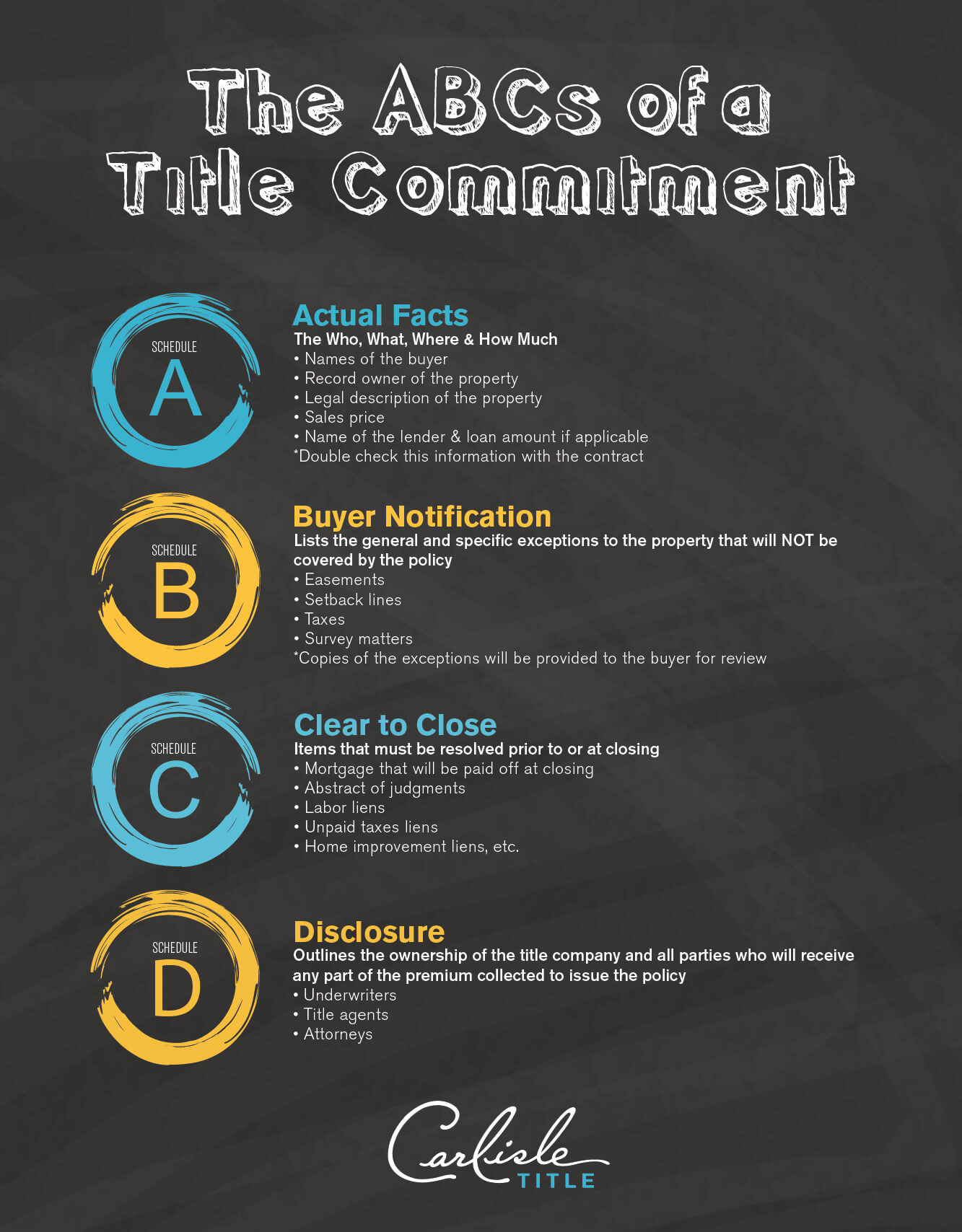 Once a real estate transaction is under contract, the buyer will receive a title commitment from the acting title company. This document can be lengthy, intimidating and sometimes hard to understand, so we want to break it down to ease the confusion and keep you better informed of each step of the real estate process.
Once a real estate transaction is under contract, the buyer will receive a title commitment from the acting title company. This document can be lengthy, intimidating and sometimes hard to understand, so we want to break it down to ease the confusion and keep you better informed of each step of the real estate process.
Taking an overview look, the title commitment provides the terms and conditions on which the title company will be issuing a title policy. Simply put, it is a commitment for title insurance. NOTE: A TITLE COMMITMENT IS NOT YOUR TITLE POLICY; AN EASY WAY TO KEEP THE TWO SEPARATE IS KNOWING A TITLE COMMITMENT IS ISSUED PRIOR TO CLOSING AND A TITLE POLICY IS POST CLOSING.
A title commitment is actually broken down into four parts called schedules. Those schedules are:
SCHEDULE A:
Actual Facts (The who, what, where and how much)
- Names of the buyers
- Record owner of the property
- Legal description of the property
- Sales price
- Name of the lender & loan amount if applicable
SCHEDULE B:
Buyer Notification (Lists the general and specific exceptions to the property that will NOT be covered by the policy)
- Easements
- Setback lines
- Taxes
- Survey matters
SCHEDULE C:
Clear to Close (items that must be resolved prior to or at closing)
- Mortgage that will be paid off at closing
- Abstract of judgments
- Labor liens
- Unpaid taxes liens
- Home improvement liens, etc…
SCHEDULE D:
Disclosure (Outlines the ownership of the title company and all parties who will receive any part of the premium collected to issue the policy)
- Underwriters
- Title agents
- Attorneys
We hope this helps in better understanding the real estate transaction and one of the many steps in closing that transaction.
This information is not to be substituted as legal advice and is descriptive only. If you have any concerns about any portion of your title commitment or any portion of Schedule A,B,C, or D, please contact your attorney.





